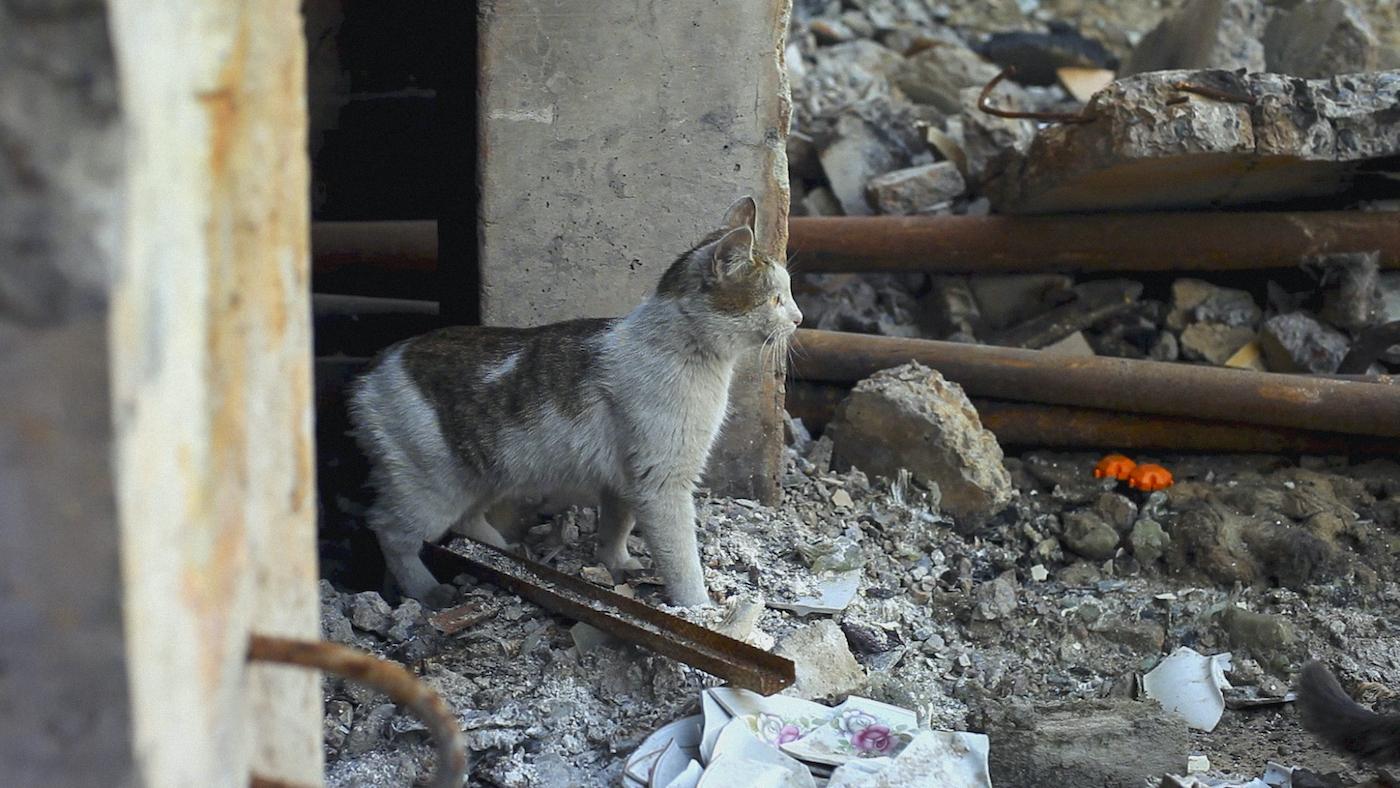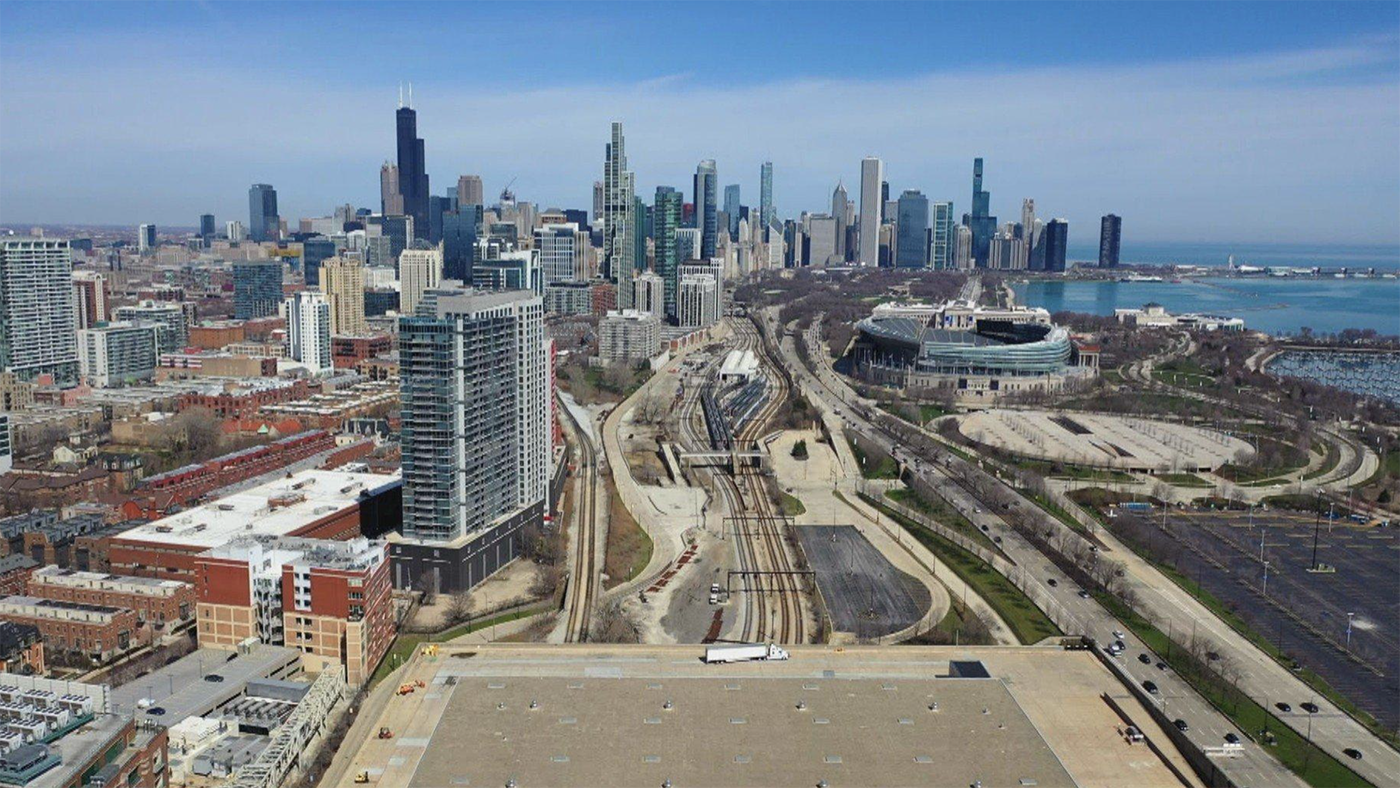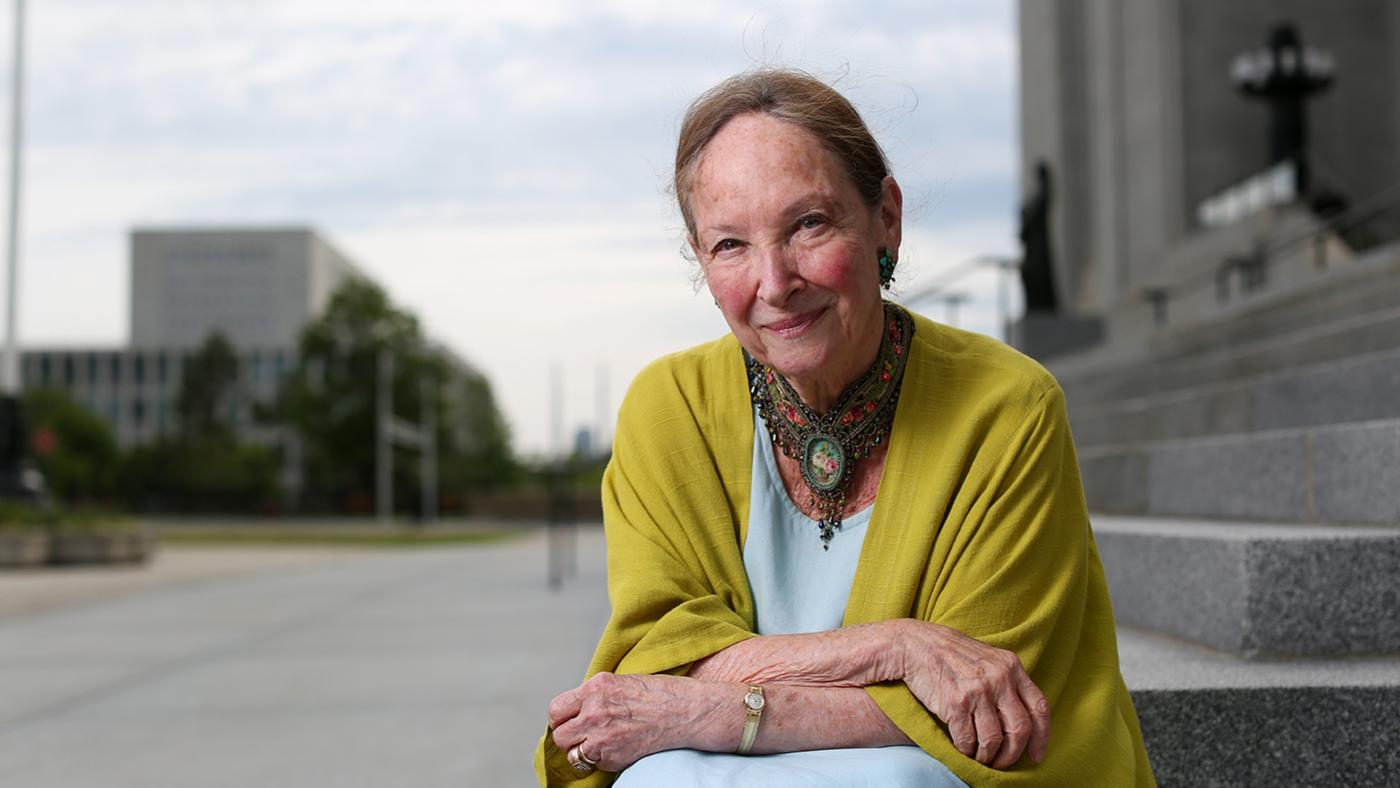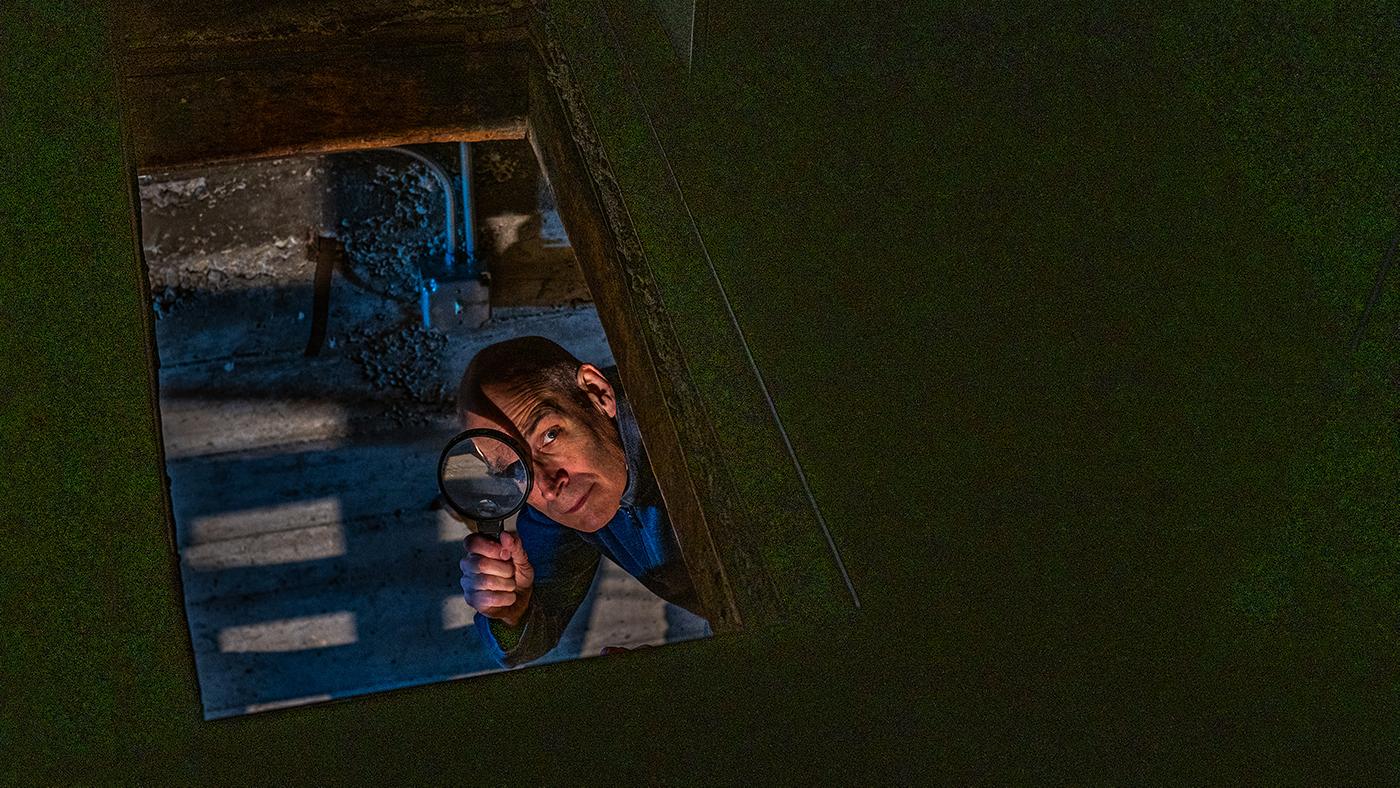The Quiet Art and Twisting Life of a Chicago-Based Japanese American Painter
Daniel Hautzinger
May 26, 2021
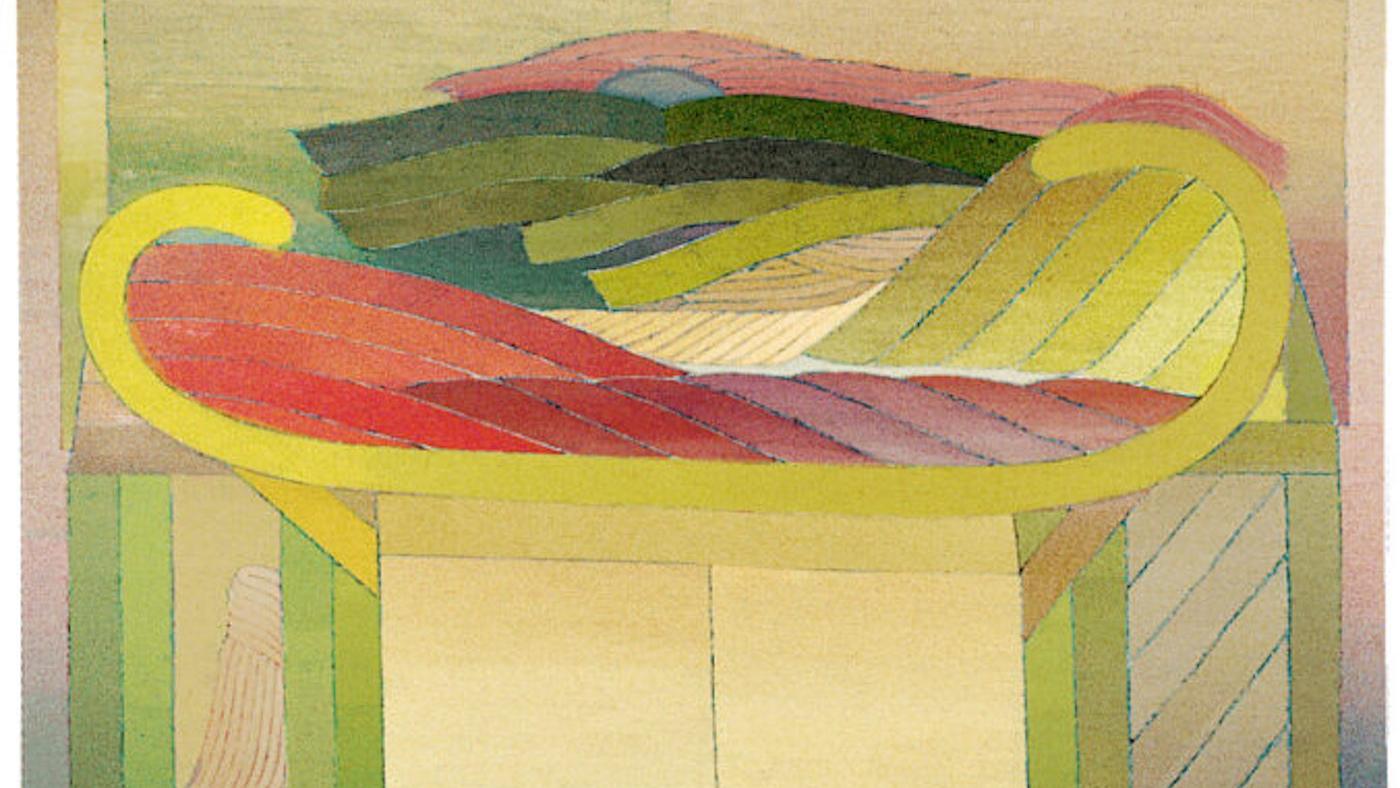
Discover more Chicago artists at wttw.com/artdesignchicago.
Miyoko Ito’s life was full of tumult, but you might not guess it from her quiet artwork. External events rocked her younger years, internal struggle shadowed her life, and a sordid saga brought her name into the tabloids after her death. Much of her art, however, contains deliberate, pastel-hued abstractions in planar arrangements infused with light—she preferred painting in the early morning. “Ito’s touch was delicate even when color was hot,” said the Chicago Tribune. Unsettled psychology may lie within, but the physical surface is generally careful and controlled.
She was born in Berkeley, California in 1918, to Japanese parents who were first cousins in an arranged marriage. Her father had come to California as a child and found a home at a church in Vallejo, where he worked as a houseboy for his lodgings. He studied at the University of California, Berkeley thanks to the financing of a Japanese restaurateur whom he had impressed.
He eventually returned to Japan to marry his fiancée, a schoolteacher, who soon followed him to California. She then made her own trip back to Japan with Ito and a second daughter when Ito was five. They were welcomed the day after they arrived by a devastating earthquake that killed over 100,000 people.
Ito’s five years in Japan were both troubled and invigorating, in her own telling. “Those five years are the roots of what I am right now,” she told an oral historian late in her life. By her account, she was ill most of the time, perhaps as the result of a nervous breakdown, from which she would suffer again in later life. (She also survived breast cancer.) Her illiterate grandmother cared for her. She was immersed in the arts—calligraphy, creative writing, landscape painting—at school, excelling in them even at that young age.
Her family returned to her father in Berkeley when she was ten. She struggled to master English and lost her ability to speak (but not read) Japanese in the process. (She said she had to “suppress” Japanese in order to learn English.)
She left her family home in a segregated, predominantly Black neighborhood to attend the University of California, Berkeley, paying her way and studying painting in the school’s small art department. She met her future husband, Harry Ichiyasu, within a few days of studying there.
Ito quickly married Ichiyasu during her senior year in 1942 to prevent being separated when the United States government detained Japanese Americans in internment camps as the country entered World War II. Soon before she was due to graduate, Ito and Ichiyasu were sent to the Tanforan Assembly Center near San Francisco together to be processed for internment.
While there, at the behest of Ichiyasu, she applied for graduate school—in part as a way to escape internment. She was accepted by Smith College in Massachusetts, despite being the only graduate student in art there. “If anything we were learning from each other,” she said in her oral history of her “very novice instructor.”
At a time of suspicion towards Japanese Americans, she traveled across the country by train, a young woman alone, visiting the Art Institute while changing trains in Chicago.
She thought her husband would soon follow, but instead he was sent to an internment camp in Utah. Because he had worked as a sales agent for a Japanese brewery, he was considered extra suspicious and would remain detained until 1945.
On her own in more ways than one, Ito forged ahead, mounting her first solo exhibition at Smith. The separation between her art and her husband continued throughout her life; her artist friends almost never saw Ichiyasu at events. But the marriage was loving: “Being married to Harry was so much better than I ever thought marriage could be,” she wrote.
Ito soon retraced her exodus from California, stopping this time where she had changed trains to study at the School of the Art Institute in Chicago. Ichiyasu eventually joined her; they would settle in Hyde Park and have two children, and she would live the rest of her life here.
She became a steady part of Chicago’s artistic scene, with a 1980 retrospective at the Renaissance Society naming her “almost universally admired among the various factions of Chicago art.” She was close friends with Don Baum, an important curator in the city.
She also befriended and influenced a group of younger artists who, in part under Baum’s wing, became known as the Imagists and made Chicago art known around the country. While Ito’s work was more abstract (and therefore less popular) than the zany, pop culture-filled figuration of the Imagists, numerous commentators have observed a connection. Ito “sort of hovered in between a formal point of view and the rich symbolism and imagery of the Chicago Imagists,” Baum said, while a catalog for a 2018 Ito show argues that, “Ito shared the Imagists’ zeal for the subliminal juxtaposition, logic-defying representation, and technical precision of Surrealism. Ito and the younger artists successfully fused Pop Art’s feverish palette with an eccentric, outsider air.”
Perhaps because her work wasn’t easily pigeonholed into a dominant genre, Ito never found widespread success. “It’s very hard to take really when you’re age thirty and you’re sort of dismissed as an old lady painter,” she told the oral historian. The Met accepted a watercolor early in her career; she participated in Chicago-area shows such as Exhibition Momentum; had the occasional solo show, like at Baum’s Hyde Park Art Center in 1971; and has work in the collections of the Art Institute and Smithsonian Art Museum, among others. (A painting from the Museum of Contemporary Art hung in the office of Rahm Emanuel when he was mayor.)
She did receive a good deal of attention after her death in 1983, but not for her work. In 1986, a promising young art collector and dealer named Kenneth Walker was tried for stealing three artworks from Ito’s home after Ichiyasu noticed they were missing: a Picasso etching, a wooden African fetish dog, and an etching by Giorgio Morandi, whose emotionally invested still-lifes garner comparisons to Ito’s work. In a dramatic court trial, Walker claimed to have had an affair with Ito beginning in 1973, when he was a 21-year-old student at the School of the Art Institute and she was a 55-year-old established painter. “Not your ordinary love affair, maybe the kind you read about,” Walker’s lawyer said, describing the alleged relationship as “mystical.”
Walker said Ito had gifted him the works before her death. He had already sold the Picasso. He was found innocent, to the surprise of many, but faced further civil charges and damages from Ichiyasu, as well as unrelated criminal charges in connection with the theft of work from a gallery where he had been director.
In the wake of his arrests, Walker visited a psychiatric ward three times, including after a possible suicide attempt. Later in 1986, he went to the shore of Lake Michigan near Belmont Harbor, doused himself with gasoline, and lit himself on fire. The immediate story of Ito’s cool art ended in a fiery suicide.

